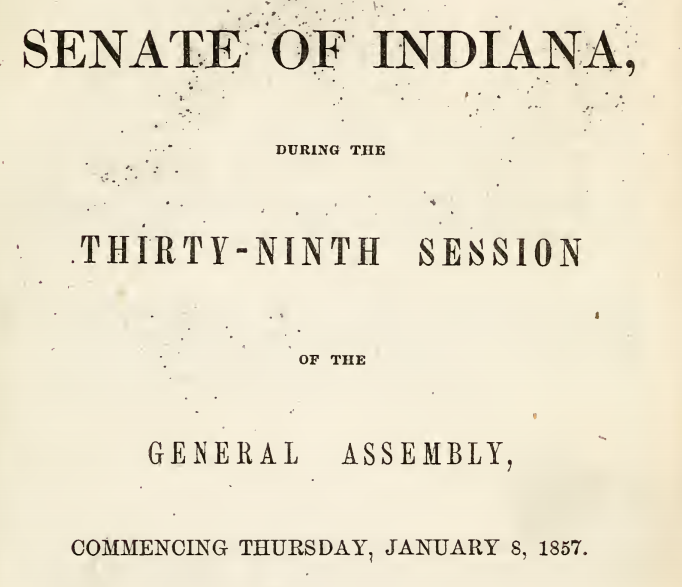In 1857 the Indiana General Assembly moved both positively and negatively against the freedoms of the African American ex-slaves. Six years before the federal Emancipation of the slaves and 37 years after Indiana state outlawed slavery within its borders, the matter of dealing with the freed slaves was still an on-going debate. Even freed slaves were not quite free to live as they wish. What we can learn from the 39th general assembly is that the south viewed the northern freedom as mess of poverty, because the working class northerner was no better off than a southern slave. Secondly, that freed slaves in Indiana were still under sever restrictions. They were not quote equal under the law yet. Even worse, the northern state's difficulty of integrating ex-slaves into society was drawing sharp criticism from southern states who were condemning the north for allowing whites to be brought down to the level of the negros.

Heritage of Hate
Preserving State's Rights to Enslave
